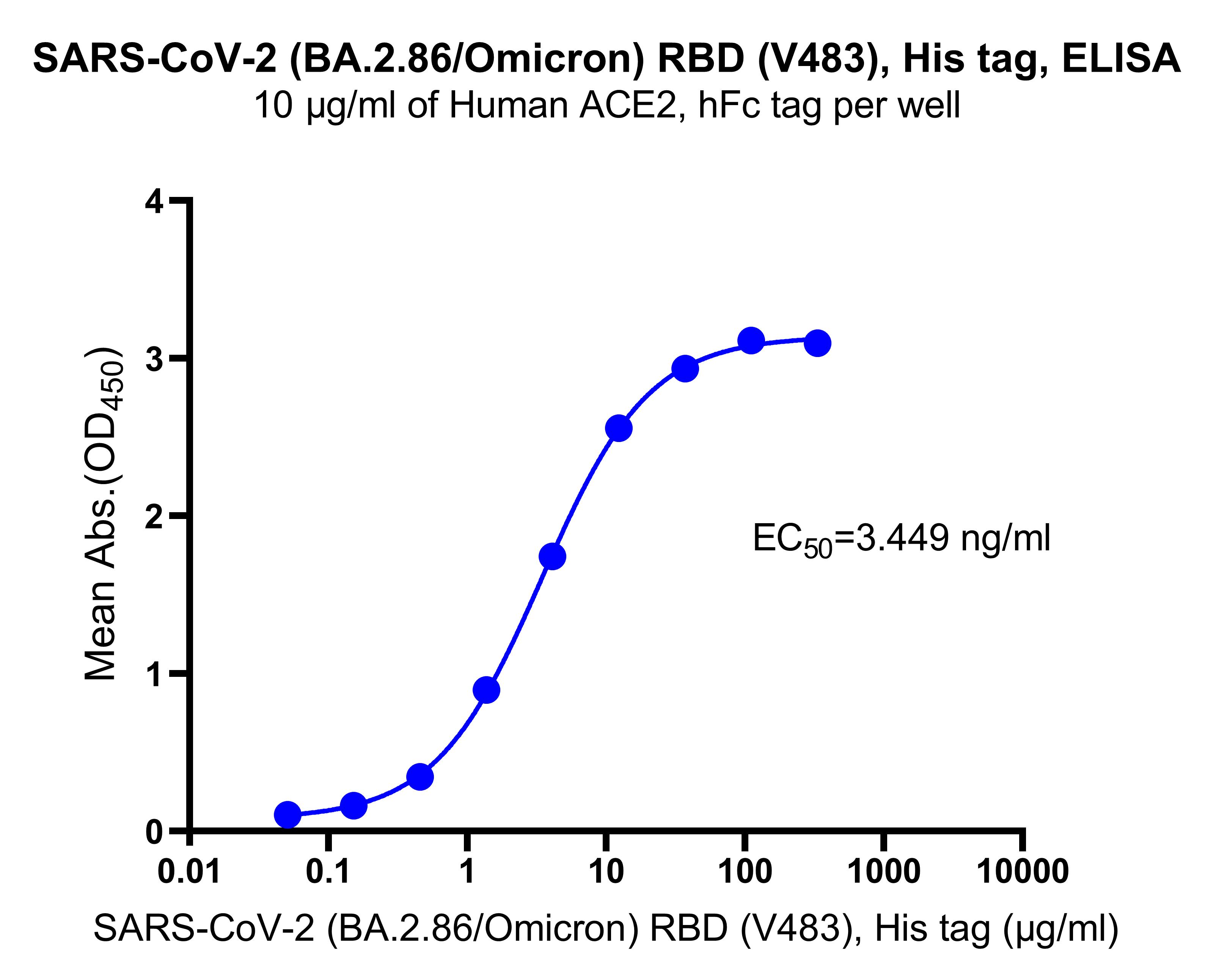Protein sequence (P0DTC2, Arg319-Lys537, with C-10*His) RVQPTESIVRFPNVTNLCPFHEVFNATRFASVYAWNRTRISNCVADYSVLYNFAPFFAFKCYGVSPTKLNDLCFTNVYADSFVIKGNEVSQIAPGQTGNIADYNYKLPDDFTGCVIAWNSNKLDSKHSGNYDYWYRLFRKSKLKPFERDISTEIYQAGNKPCKGVKGPNCYFPLQSYGFRPTYGVGHQPYRVVVLSFELLHAPATVCGPKKSTNLVKNKGGGGSHHHHHHHHHH
12 months from date of receipt, -20 to -70 °C as supplied. 6 months, -20 to -70 °C under sterile conditions after reconstitution. 1 week, 2 to 8 °C under sterile conditions after reconstitution. Please avoid repeated freeze-thaw cycles.
BA.2.86 is an Omicron subvariant of SARS-CoV-2, the virus that causes COVID-19. BA.2.86 is notable for having more than thirty mutations on its spike protein relative to BA.2. The subvariant, which was first detected in a sample from 24 July 2023, is of concern due to it having made an evolutionary jump on par with the evolutionary jump that the original Omicron variant had made relative to Wuhan-Hu-1, the reference strain first sequenced in Wuhan in December 2019. It is a mutation of BA.2, itself a very early mutation in the Omicron family. BA.2.86 was designated as a variant under monitoring by the World Health Organization on 17 August 2023. Sars-cov-2 infects human respiratory epithelial cells through binding to human ACE2 receptors. Spike protein is a large type I transmembrane protein containing two subunits S1 and S2. S1 mainly contains a receptor binding domain (RBD), which is responsible for recognizing cell surface receptors. S2 contains the basic elements required for membrane fusion. S protein plays a key role in inducing neutralizing antibody and T cell responses as well as protective immunity.

Immobilized Human ACE2, hFc tag (Cat. No. S0A0071) at 10 μg/mL (50 μL/well) can bind SARS-CoV-2 (BA.2.86/Omicron) RBD (V483), His tag with EC50 of 3.221-3.691 ng/ml.
2 μg(R: reducing conditions)